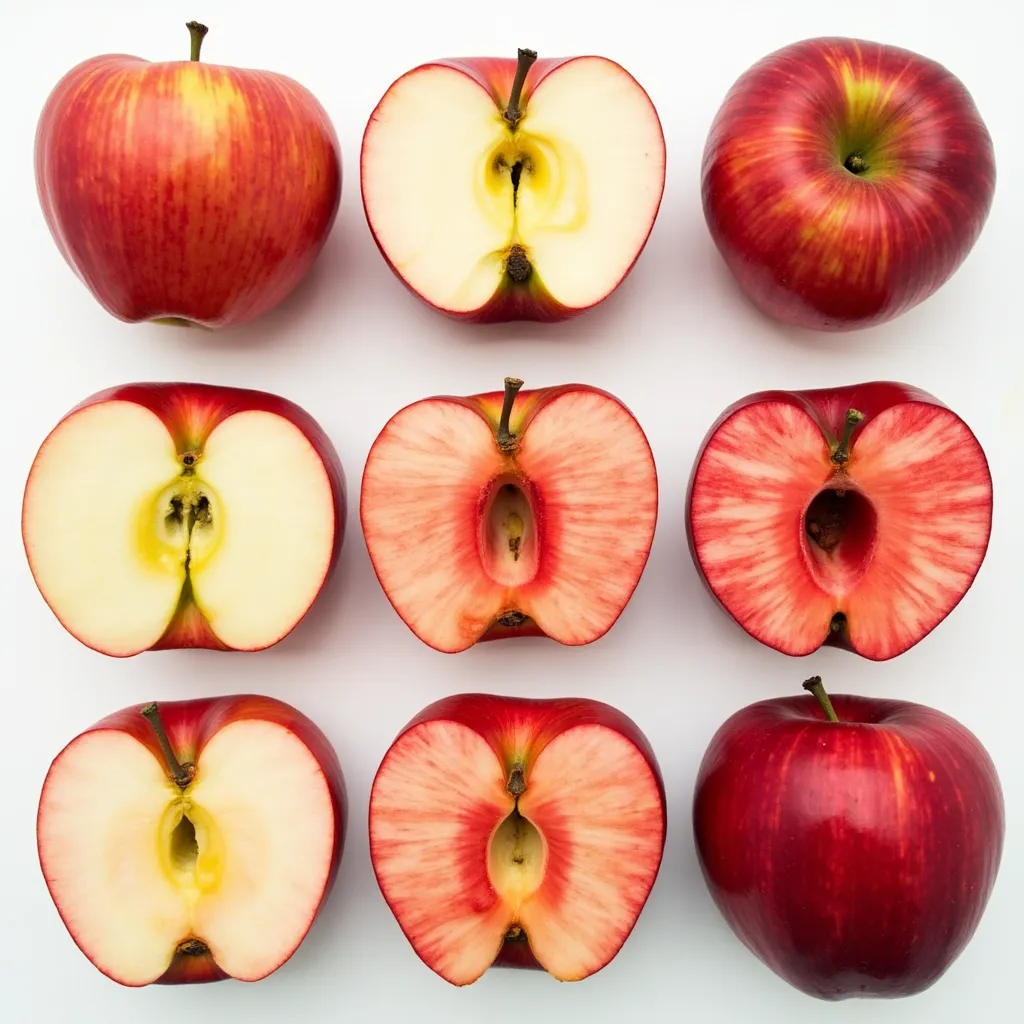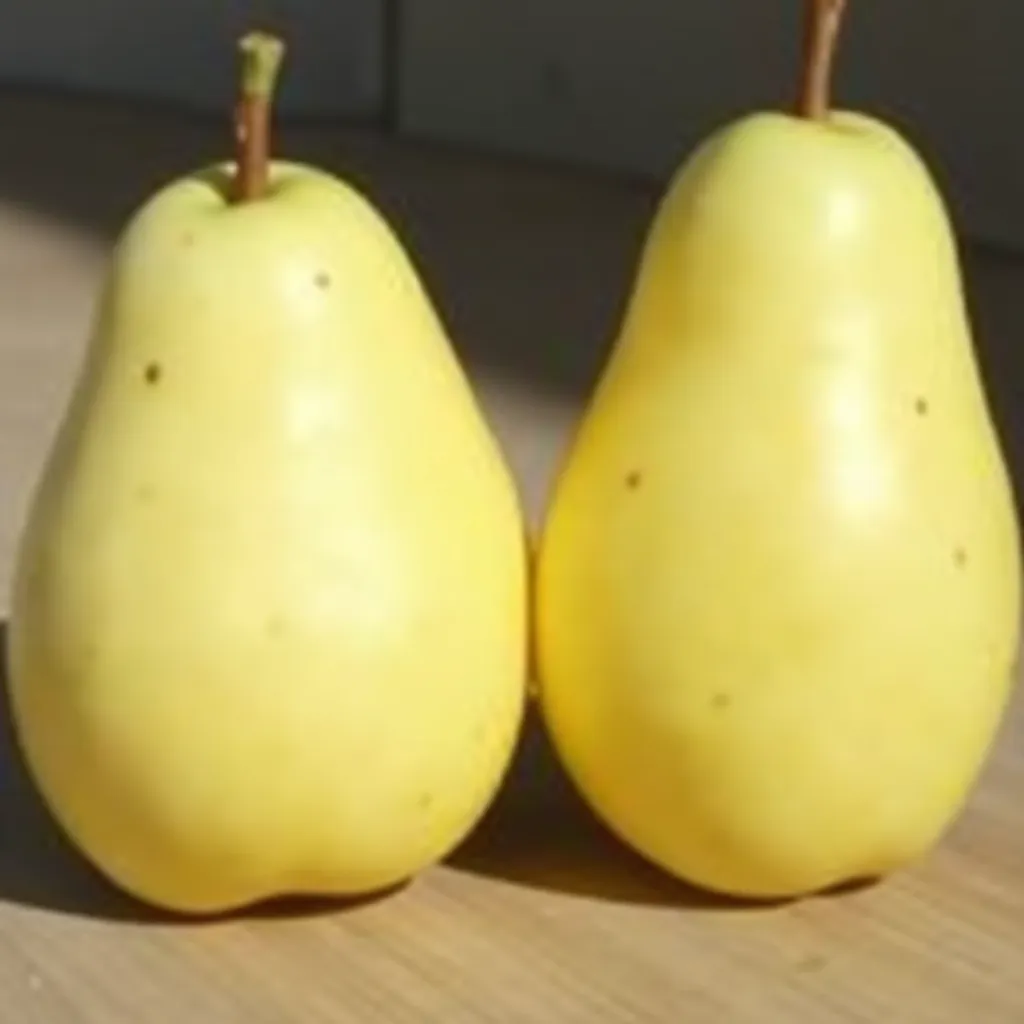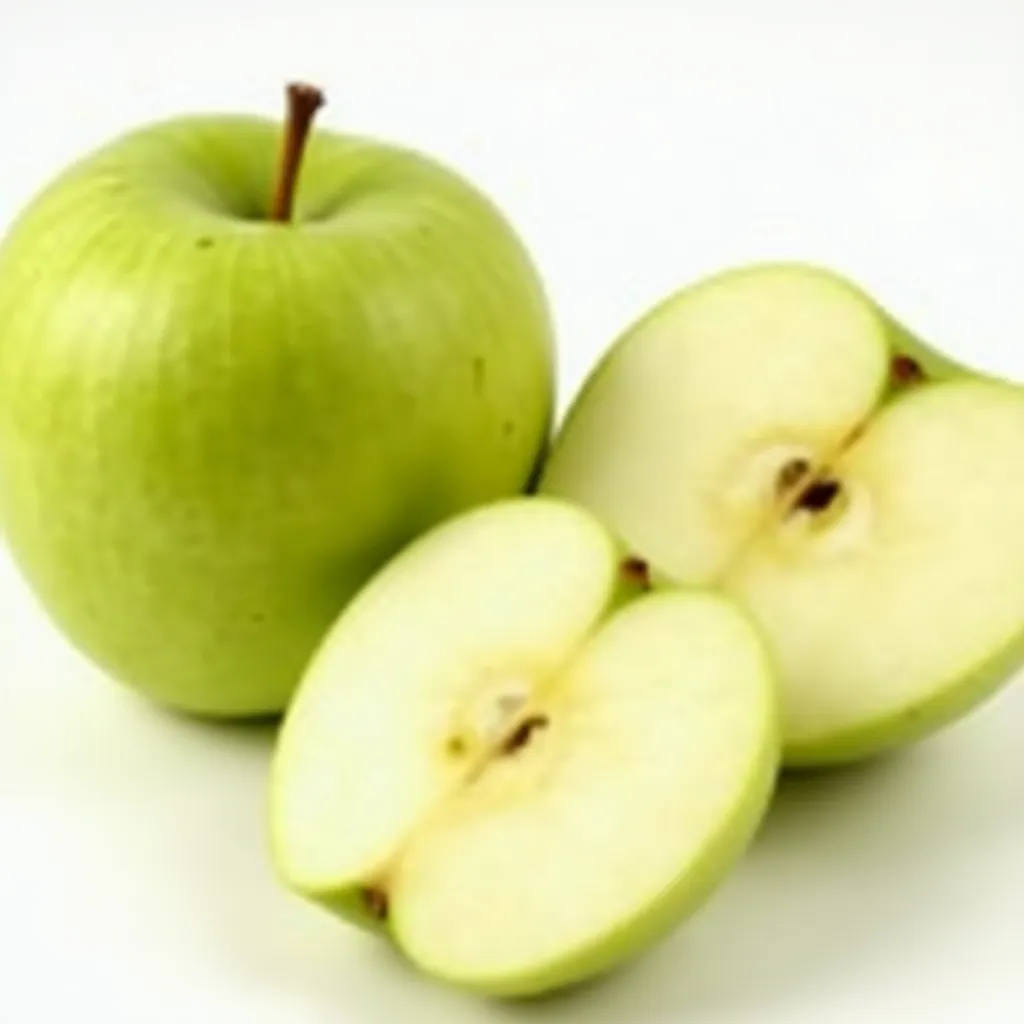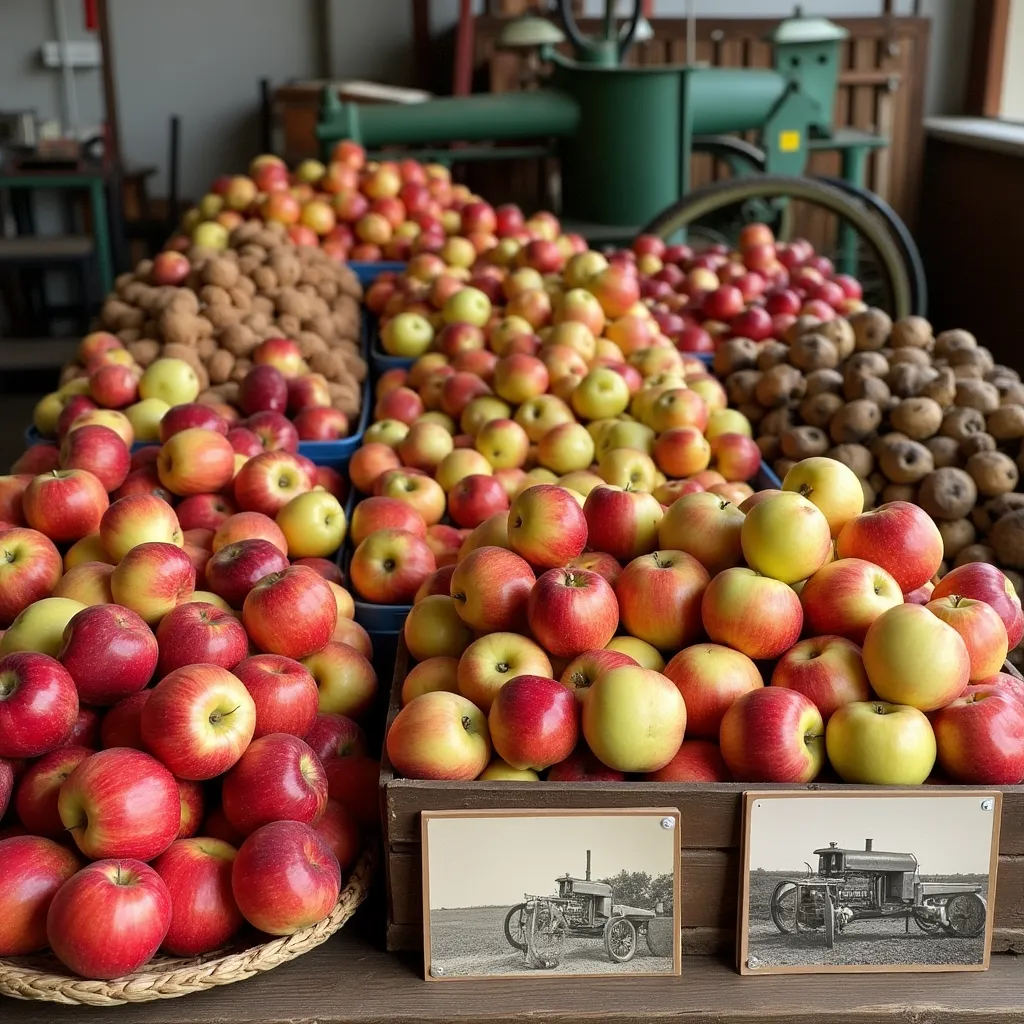· varieties · 4 min read
Pink-Fleshed Apples: Complete Guide to Red-Flesh Varieties
A comprehensive guide to pink-fleshed apples, detailing their unique characteristics, growing requirements, and culinary uses.

Variety Overview
Pink-fleshed apples, also known as red flesh apple varieties, are a captivating group of cultivars prized for their unique rosy interiors and often vibrant skin colors. These apples, ranging from pale pink to deep crimson inside, offer a delightful surprise when sliced and a beautiful presentation in various culinary applications. The apple with pink flesh is gaining popularity for both its aesthetic appeal and its often complex flavor profiles, combining sweetness and tartness with a pleasing crisp texture. This guide explores the world of the red flesh apple tree, covering everything from their history and growing habits to their diverse uses in the kitchen. One well-known example is the pink pearl apple, although many other red-fleshed apple varieties exist, each with their unique characteristics.
Characteristics
Pink-fleshed apples typically offer a delightful combination of flavors, often encompassing sweet, tart, and balanced notes, providing a complex eating experience. Their texture is generally crisp and firm, making them satisfying to bite into. Visually, these apples present a striking appearance. The skin can exhibit a range of colors, including red, yellow, and green, often with a solid or striped pattern. The size is usually medium, making them a convenient choice for snacking and cooking.
Growing Information
Cultivating pink-fleshed apples presents a moderate growing difficulty. These trees thrive in spring and summer, with a harvest season typically occurring in the early to mid part of the season. Their disease resistance is moderate, requiring some attention to pest and disease management. Selecting the proper location with adequate sunlight and well-drained soil is crucial for successful growth.
Best Uses
The versatility of pink-fleshed apples makes them suitable for various culinary applications. Fresh-eating is a primary use, allowing the unique flesh color and flavor to shine. Baking is another excellent option, as the apples hold their shape well and contribute both moisture and flavor to pies, tarts, and muffins. Furthermore, their balanced flavor profile lends itself well to cooking in savory dishes, adding a touch of sweetness and acidity to sauces, chutneys, and salads.
History and Origin
The history of many pink-fleshed apples traces back to the mid-20th century. Developed in the United States around 1950, some varieties, such as those with Golden Delicious and Red Delicious parentage, emerged from breeding programs aiming to create unique and flavorful apples. This period marked a significant step in expanding the range of apple varieties available to consumers.
Storage and Handling
Pink-fleshed apples generally possess good storage life. When stored properly in a cool, dark, and humid environment, such as a refrigerator, they can maintain their quality for several weeks or even months. Proper handling to prevent bruising will further extend their shelf life.
Availability
The availability of pink-fleshed apples is typically tied to their harvest season, which falls in the early to mid-part of the season, primarily during the spring and summer months. Depending on the specific variety and growing region, availability may extend into the early fall. Local farmers’ markets and specialty stores are often good sources for finding these unique apples.
Selection Tips
When selecting pink-fleshed apples, look for specimens that are firm to the touch and free from bruises or blemishes. The skin color should be vibrant, with a consistent pattern, whether solid or striped, depending on the variety. A fragrant aroma is another indicator of ripeness and quality.
Comparison to Similar Varieties
Pink-fleshed apples stand out due to their distinctive interior color. While they share some characteristics with their parent varieties, such as Golden Delicious and Red Delicious, in terms of sweetness or texture, the pink flesh sets them apart, creating a unique niche in the apple market. Compared to more common varieties, they often offer a more complex flavor profile and a more visually striking presentation.
Common Uses
Expanding on the best uses, pink-fleshed apples are ideal for a variety of culinary creations. For fresh-eating, they are a delightful and healthy snack. In baking, their firm texture prevents them from becoming mushy, making them perfect for pies, crisps, and cakes, while their color adds an unexpected visual element. In cooking applications, they can be incorporated into both sweet and savory dishes, such as salads, sauces, and chutneys, where their balanced flavor provides a complementary counterpoint to other ingredients.
Growing Tips
Given the moderate growing difficulty and disease resistance, providing proper care for pink-fleshed apple trees is essential. Regular pruning to maintain shape and air circulation, monitoring for pests and diseases, and providing adequate fertilization will contribute to healthy growth and abundant fruit production. Selecting disease-resistant rootstock can also mitigate potential challenges. For optimal fruit development, ensure the trees receive sufficient sunlight and water, especially during dry periods. Consulting local agricultural extension services can provide tailored advice for your specific growing region.


